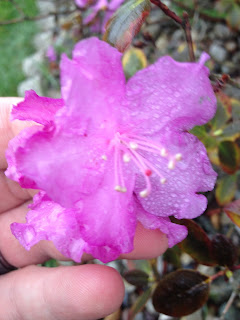I don't have a lawnmower. So I trekked over to the Home Depot and bought myself a new shiny red lawnmower! Then I mowed and it was good.

Then I looked around and needed to put some fresh mulch in an area around some trees I had. Well I don't have a wheel barrel so I had to manually carry 12 bags of mulch, I know what a drag, but all in all it was a good work out. I also added some ceramic frogs my aunt gave me as a housewarming present.
So I thought to myself, Self what is the purpose of mulch, besides making the area look nice?
So off to the Google machine I went. I found http://www.dummies.com/how-to/content/understanding-the-benefits-of-garden-mulch.html. This was a great resource of information.
Ultimately the mulch does a lot of things and not just making it look pretty.
- Prevents weeds
- Holds moisture
- Moderates temp
- Prevents frost-heaving in the winter
- Keeps roots cool
- Depending on the mulch it can provide nutrients to the soil as well.
So it actually does a lot for the trees and plants in the area that you put the mulch. I used bark mulch as my did mostly did as well, but I thought what other types are there?
- Grass Clippings
- Bark Mulch
- Decaying Leaves
- Compost
- Peat Moss
- Straw
- Hay
- Rocks
- Fabric
- Rubber Mulch, usually recycled from tires
Each of these mulches have their own set of pros and cons and can be see at the dummies website.































